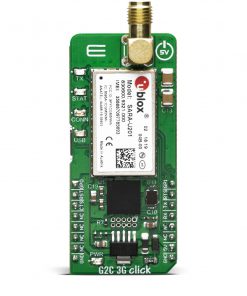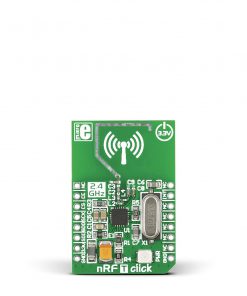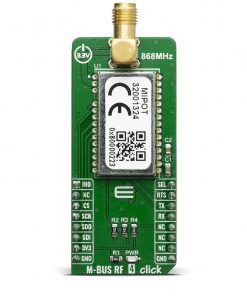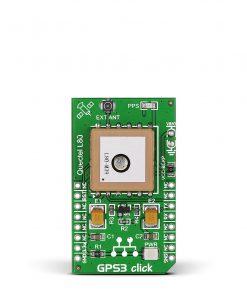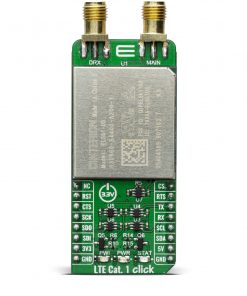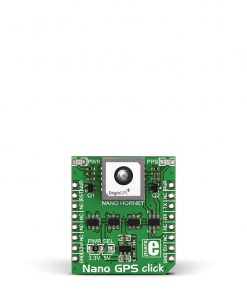UWB 4 Click is a compact add-on board for precise indoor positioning and location-based applications. This board features the Sera NX040 (453-00174C) from Ezurio, featuring NXP’s SR040 chipset for ultra-wideband (UWB) and Nordic Semiconductor’s nRF52833 for Bluetooth LE. The module supports IEEE 802.15.4/4z HPR UWB operations, providing exceptional ranging accuracy of less than ±10 cm with a typical receiver sensitivity of -92 dBm. It includes a USB interface and SWD/JTAG header for development and debugging, reset and user buttons, RGB LED indicator, and test points for easy testing. This Click board™ is ideal for asset tracking, navigation, and industrial automation applications, where precise positioning and wireless communication are crucial.
UWB 4 Click is fully compatible with the mikroBUS™ socket and can be used on any host system supporting the mikroBUS™ standard. It comes with the mikroSDK open-source libraries, offering unparalleled flexibility for evaluation and customization. What sets this Click board™ apart is the groundbreaking ClickID feature, enabling your host system to seamlessly and automatically detect and identify this add-on board.
NOTE: The Sera NX040 is equipped with two antenna connectors designed for use with the NanoUWB planar monopole antenna (EUB5850A3S-10MH4L) and the 2.4GHz FlexPIFA Antenna with an MHF4L 100mm cable (001-0022). Both antennas are included in the same package as the Click board™, offering enhanced connectivity and functionality.
 Alcohol 3 Click
1 × R700.00
Alcohol 3 Click
1 × R700.00  WiFi Plus Click
1 × R2,200.00
WiFi Plus Click
1 × R2,200.00  ccRF2 Click
1 × R790.00
ccRF2 Click
1 × R790.00  RS485 Click 5V
1 × R230.00
RS485 Click 5V
1 × R230.00 
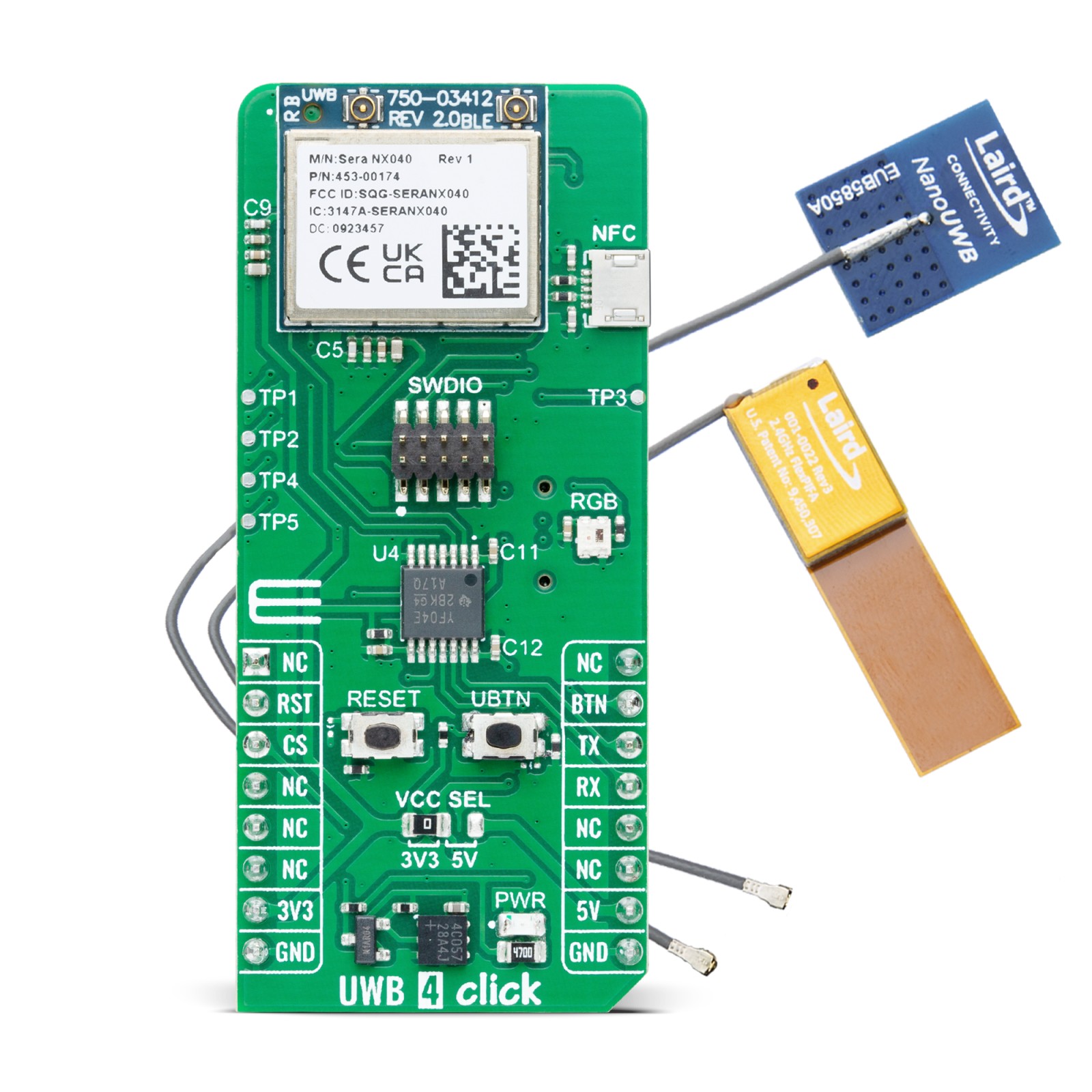
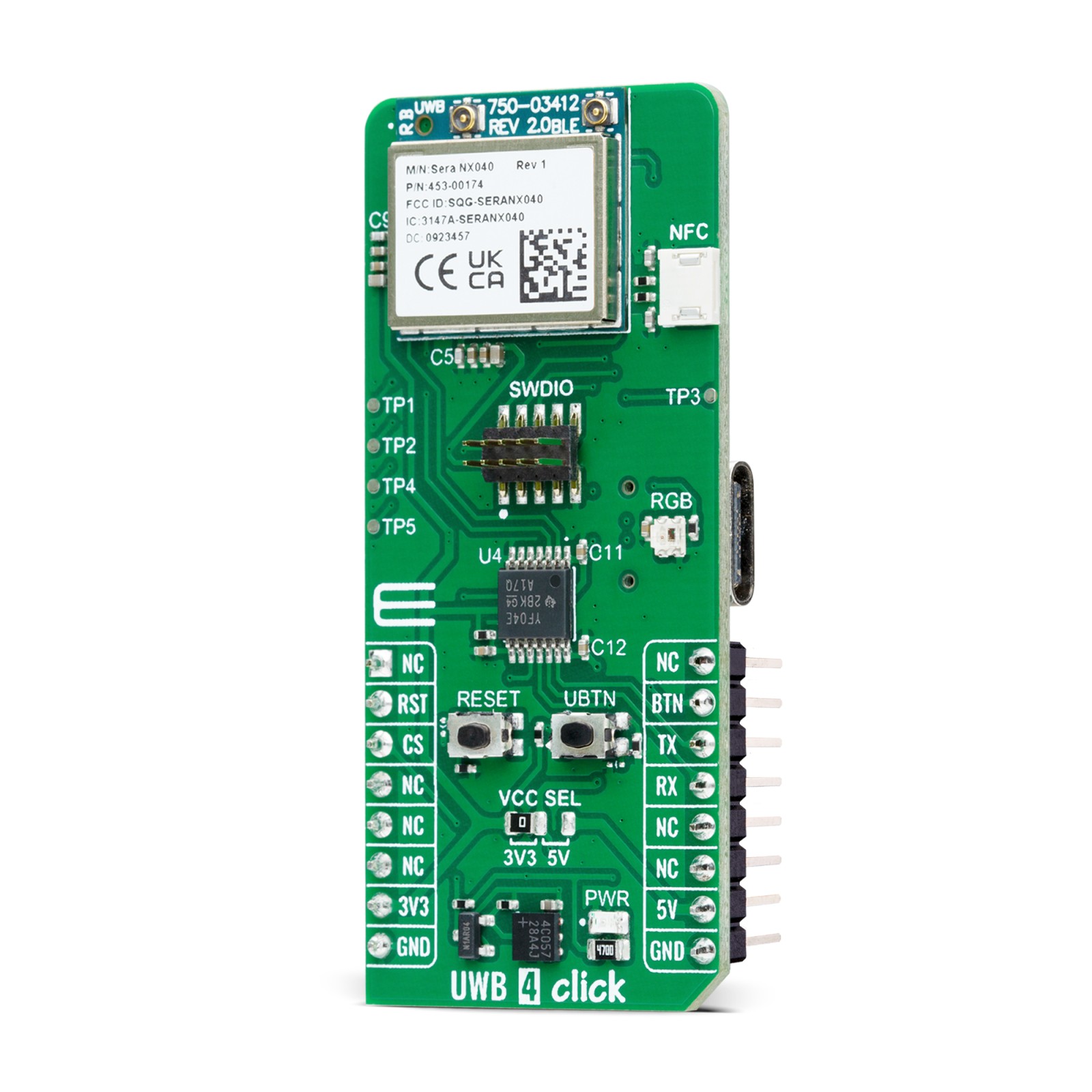
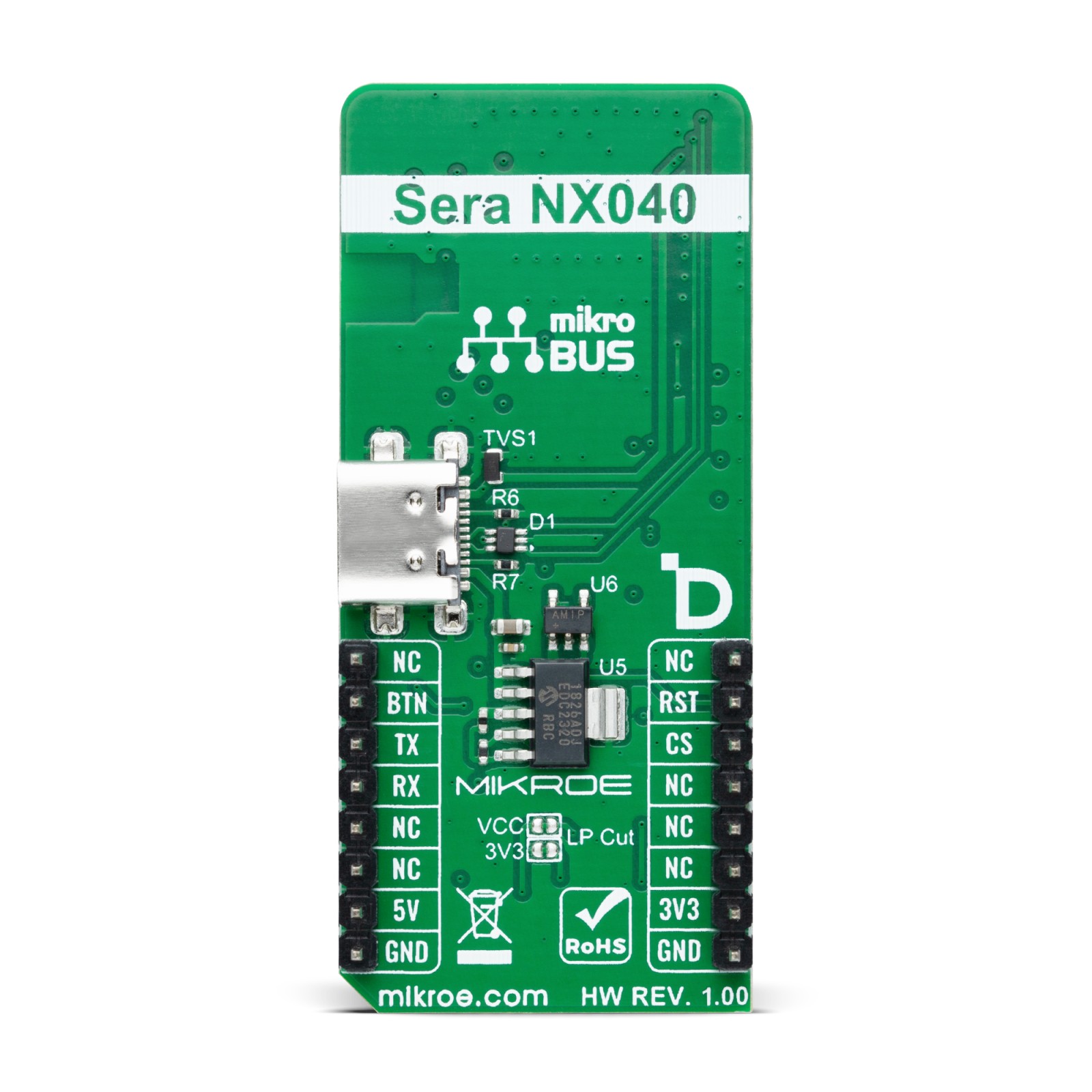

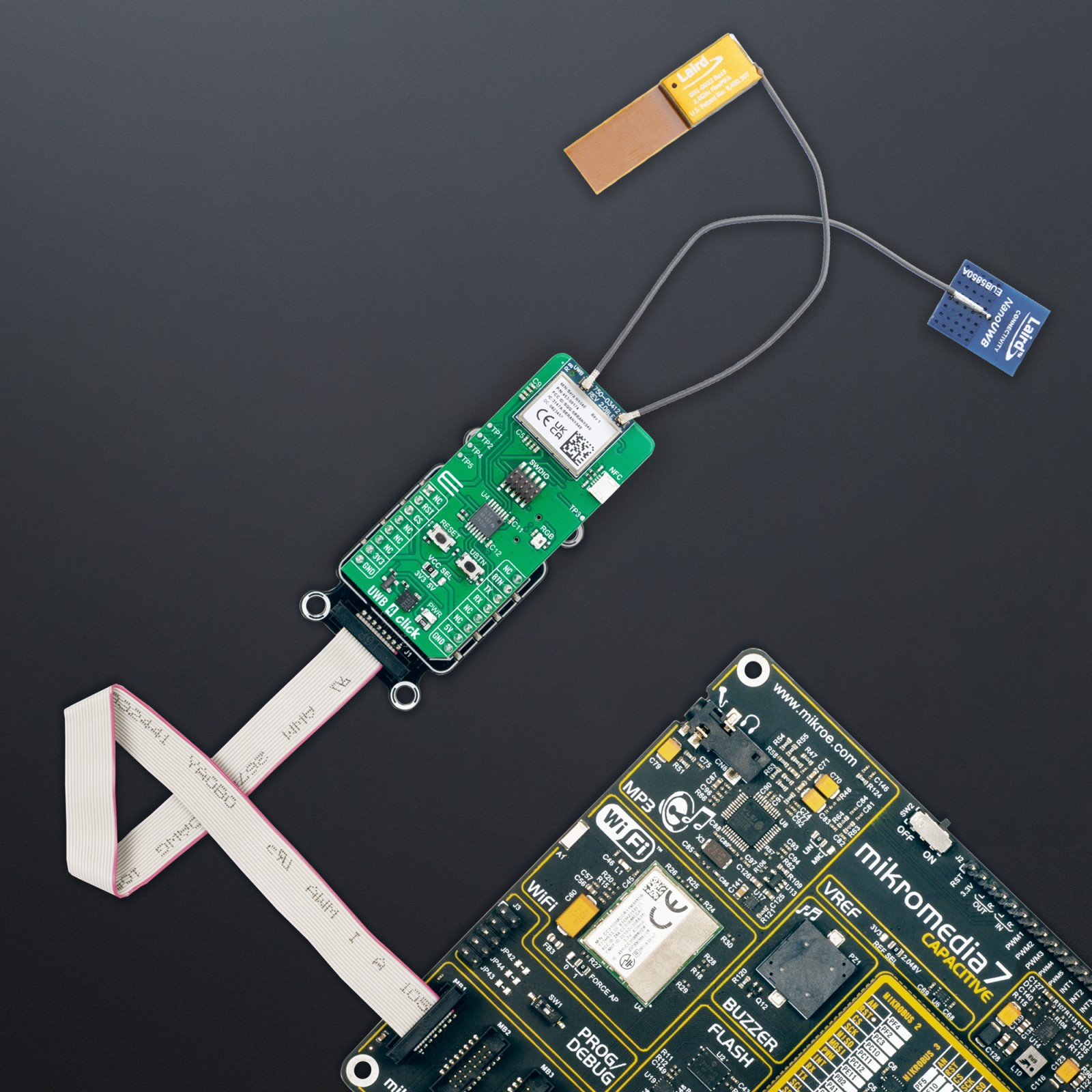
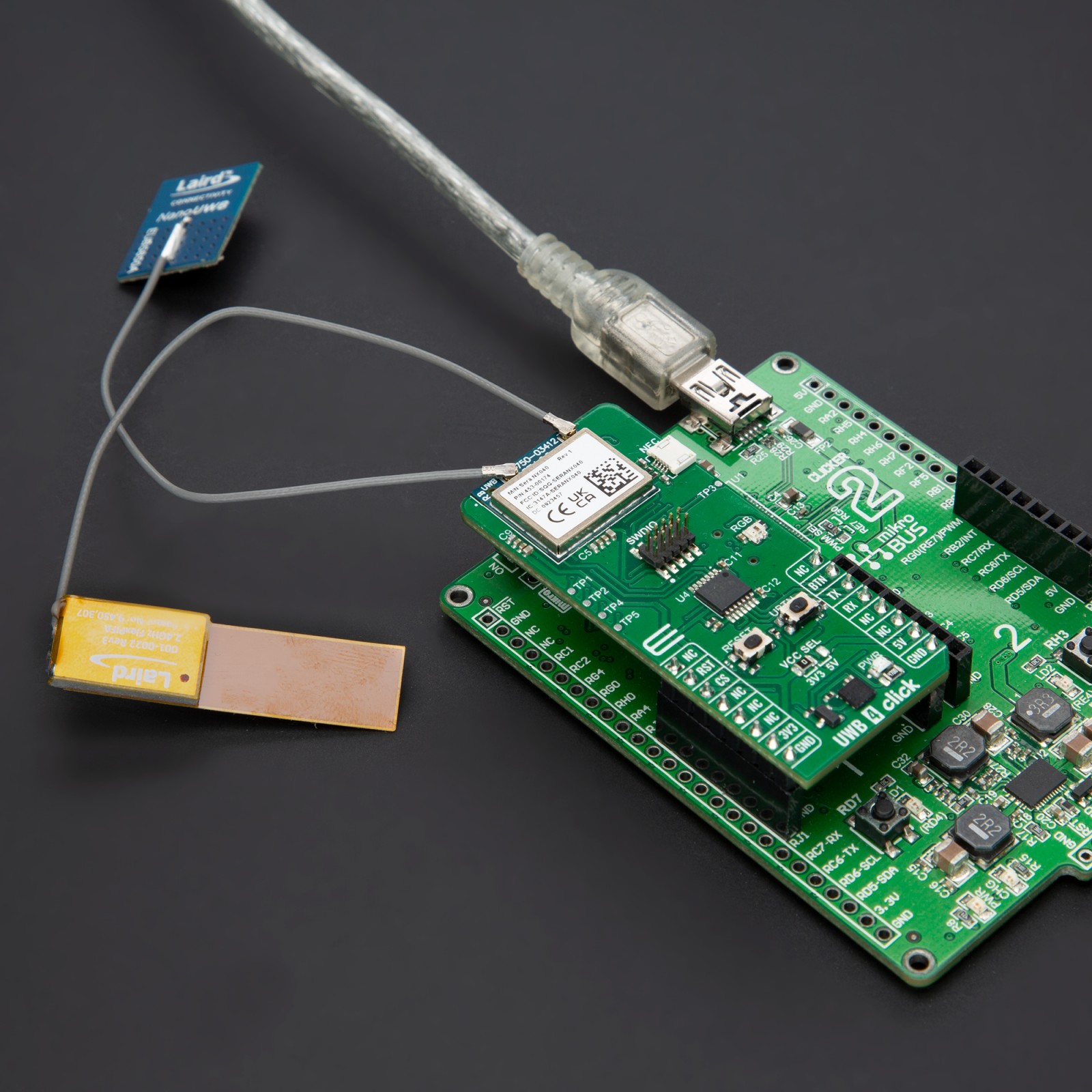
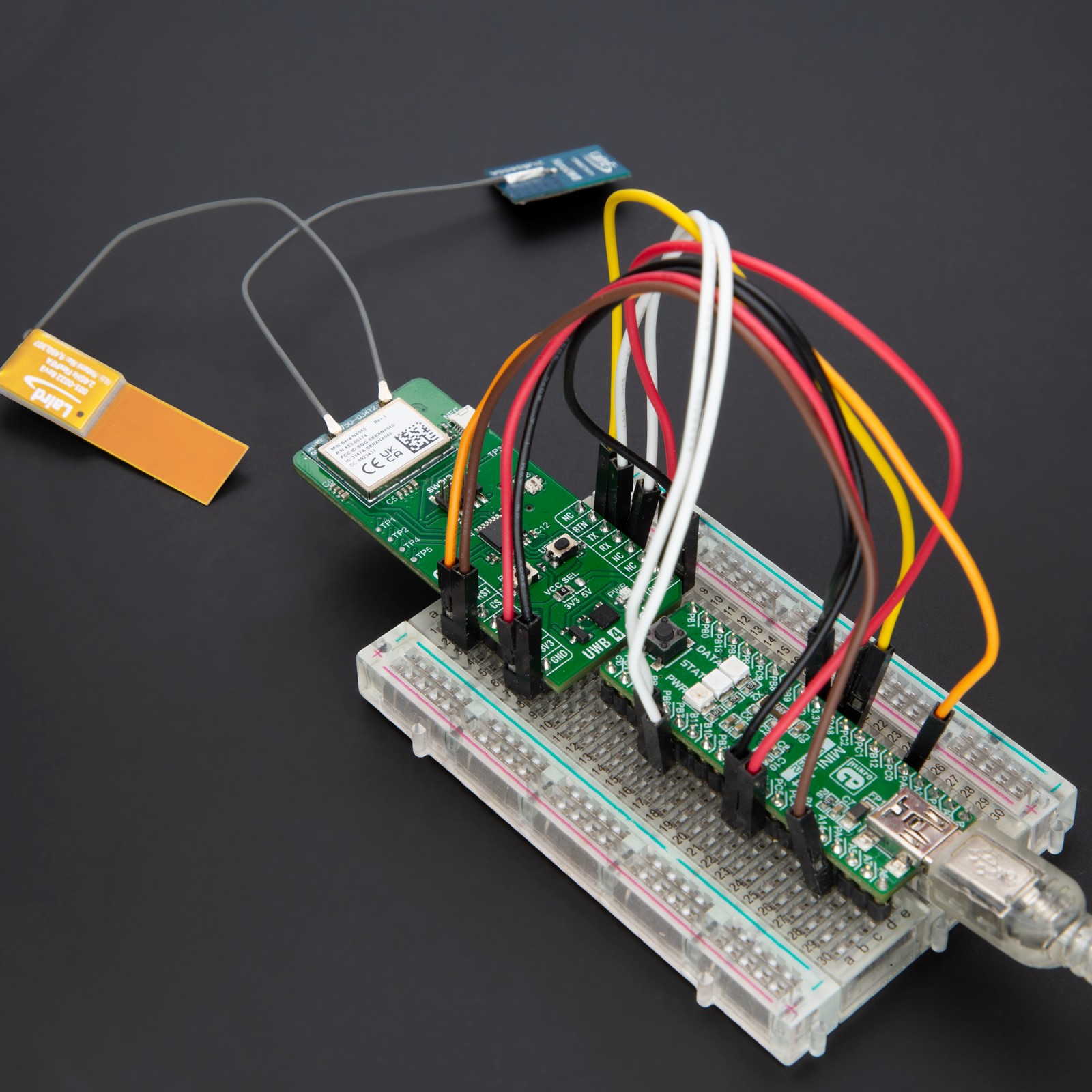

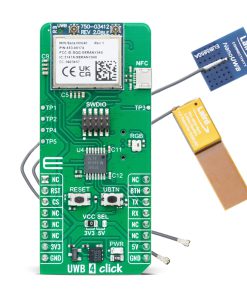

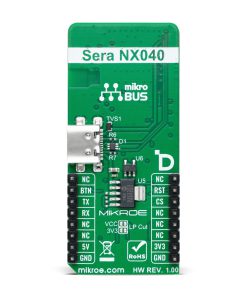
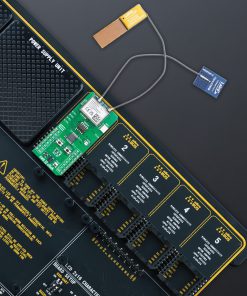
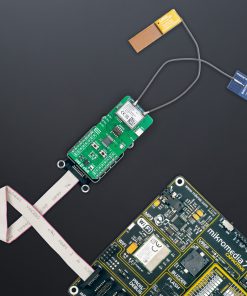
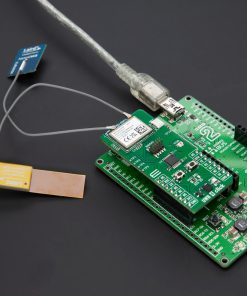
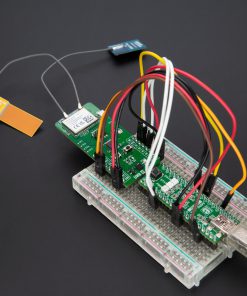

.jpg)

